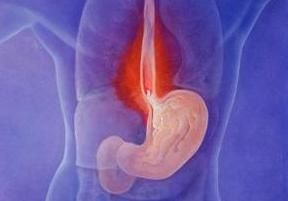Preventative Measures for Upper Gastrointestinal Tract Bleeding
Primary prevention measures for upper GI bleeding should include NSAIDs, antiplatelet therapy, and anticoagulants appropriately, while secondary preventive measures should include testing and treating H. pylori and using long-term PPIs when appropriate.

Speaking at the Southern Hospital Medicine Conference, held November 7-9, 2013, in New Orleans, LA, Nathaniel Winstead, a gastroenterologist at Houma Digestive Health Specialists, noted that upper gastrointestinal (GI) bleeding accounts for 300,000 hospital admissions, which combined cost more than $1 billion annually.
While mortality for non-variceal bleeding is approximately 3 to 14%, the death rate for variceal bleeding is between 11 and 50%, and as many as 30% of patients die from their first variceal bleed. Bleeding can result from a variety of factors, including peptic ulcers caused by nonsteroidal anti-inflammatory drugs (NSAIDs) and H. pylori; vascular problems such as fistulas and ectasias; portal hypertension; ischemia; inflammatory bowel disease (IBD); and malignancies.
In his presentation entitled “Upper Gastrointestinal Tract Bleeding,” Winstead emphasized that melena is always due to bleeding from a location in the upper GI tract. The appearance of the stool is jet black with an awful smell. He reminded the audience that the stool guaiac test is either positive or negative, though the shelf life of the test card should be noted and controls must be used while testing.
NSAID-related ulcers are responsible for up to 2,600 deaths annually, and the risk of mortality increases with age. As NSAIDs inhibit COX-1, they impact the syntheses of prostaglandins that help protect the stomach by promoting the secretion of mucus and bicarbonate, as well as increasing epithelial proliferation.
Steroids may also promote GI bleeding, but all investigations have been confounded by NSAID use. Winstead also mentioned additional causes of upper GI bleeding, such as selective serotonin reuptake inhibitors (SSRIs), emotional stress, acetominophen, and newer anticoagulants.
“Pradaxa causes significantly more GI bleeding than coumadin,” Winstead noted.
The first steps in the management of upper GI bleeding are to attend to airway, breathing, and circulation, Winstead said. If there is active vomiting of blood, intubation may be required, and when using IVs, use two 16g or larger needles. Physicians should also assess for risk of liver disease, treat any coagulation problems, and stratify for risk using methods such as the Rockall and Blatchford Scales. Scores are usually determined by assessing age, shock, comorbidities, hemoglobin, and blood urea nitrogen (BUN).
Since the mortality rate of patients with portal hypertension who develop upper GI bleeding is as high as 30%, “they probably need to go to a critical care center,” Winstead said. Those patients should undergo endoscopy within 12 hours of presentation, be medicated for portal hypertension, receive IV antibiotics to prevent spontaneous bacterial peritonitis (SBP), have their portal venous circulation assessed by Doppler ultrasound, get screened for infections, and have their renal function monitored. Winstead said somatostatin analogs remain a standard of care for portal hypertensive bleeding because they act rapidly, though their benefit may be small.
Commenting on management strategies for GI bleeding, Winstead said IV proton-pump inhibitors (PPIs) are helpful before endoscopy, but since the drip is expensive, it should only be maintained on those who have actively bleeding ulcers, visible vessels, and adherent clotting. Other patients should receive IV twice a day and then progress to oral therapy.
While the administration of metoclopramide or erythromycin is a cheap method for clearing the stomach for better visualization, Winstead said there is a risk of complications, and some can be fatal, such as arrhythmias. In contrast, nasogastric and oral gastric lavage are safe and effective methods for visualization; however, they require large 120 cc tubes, compromise the airway, and are uncomfortable for the patient.
Endoscopy for variceal hemorrhage can be used therapeutically and diagnostically, and banding and sclerotherapy through a scope are both effective. SBP prophylaxis is also necessary, since infections raise portal pressures and contribute to more bleeding.
“The new frontier [in treating GI bleeding] is coagulation powders, which are made of dehydrated fibrin,” Winstead said. As the powders are applied in a spray, it’s unnecessary to precisely target varices by injection.
Winstead said primary prevention measures for upper GI bleeding should include NSAIDs, antiplatelet therapy, and anticoagulants appropriately, while secondary preventive measures should include testing and treating H. pylori and using long-term PPIs when appropriate. Aspirin should be stopped in patients who use it as a primary prophylaxis for cardiovascular disease, but if it is being used secondarily, then its use should resume at the lowest effective dose for 7 to 14 days after a bleeding event.